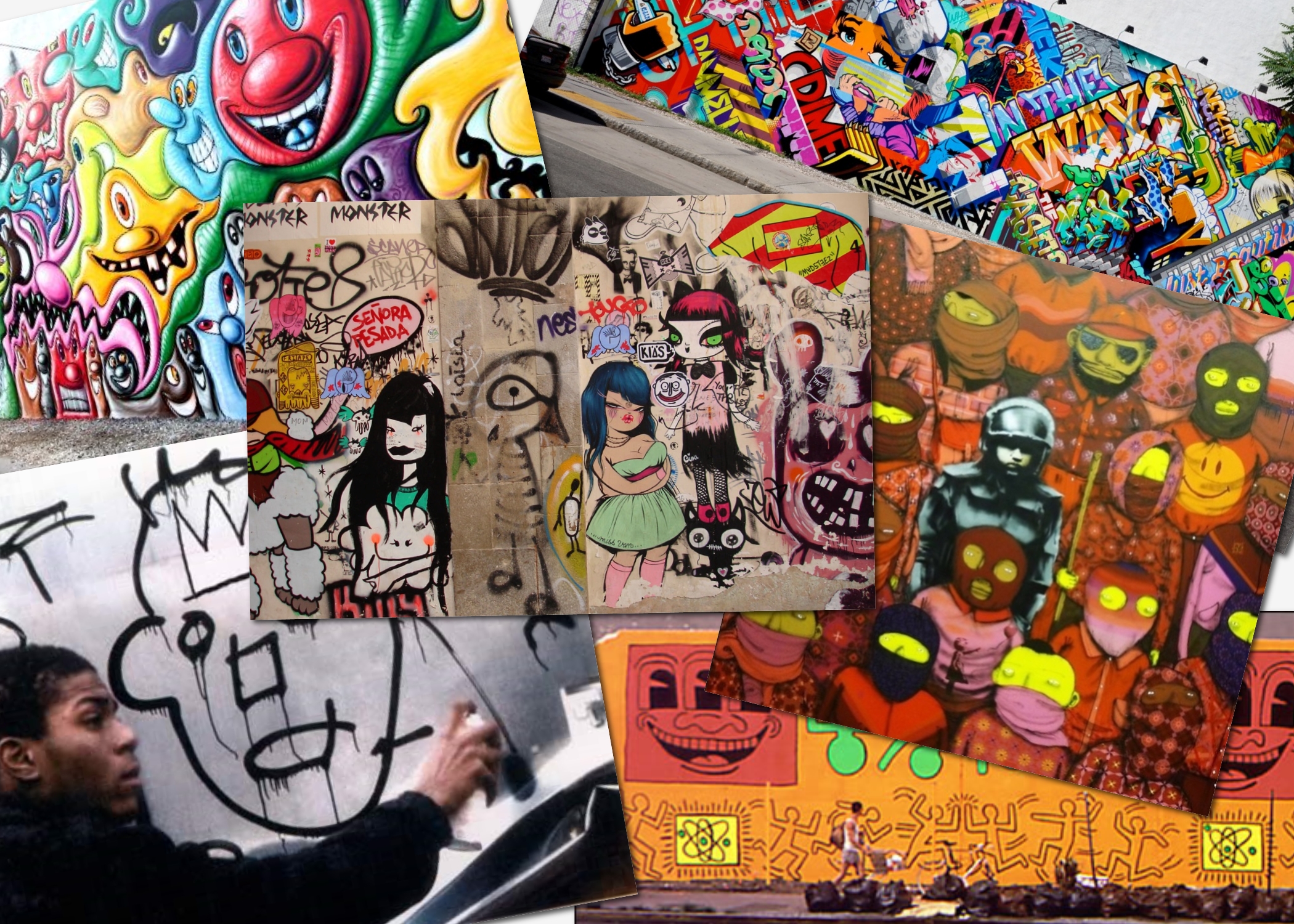Graffiti and Street Art: A Primer (Part I)
The terms graffiti and street art bring confusion to people. Even more so when the terms are used interchangeably, which is not accurate at all. Yesterday, the cover of the Village Voice showed an image of the collaboration between two very famous artists who happen to work on the street and also in their own studios: Banksy and Os Gemeos. Banksy (who still remains anonymous after all these years) intended to create one new piece on the streets of New York each day in October, a "unique kind of art show" titled "Better Out Than In." I thought it was a good time and quite relevant too, to put in writing a few thoughts about street art that can enlighten and clarify doubts and questions that my clients and friends commonly ask.
The cover of the Village Voice on October 9, 2013 with the collaboration between Banksy and Os Gemeos.
THE ORIGINS OF GRAFFITI
Graffiti, as unsolicited marking of public property, has been around for centuries. However, the 1960s were quite important for graffiti and street art, particularly in New York City (Washington Heights seems to be where the movement, as we know it, started). At that time, street artists began to use nicknames and/or symbols when they finished writing or painting the walls. This phenomenon was called “tagging.” For example, Keith Haring “tagged” a lot of subway cars and walls with his most common symbol, which is the radiant baby.
If the 60s marked the beginning of the graffiti and street art movement, it was in the 70s and the 80s where we saw its consolidation. Jean-Michel Basquiat (one of my absolute favorite artists of all time), Keith Haring, Futura (2000), Blade, Crash, Lady Pink and many of the most famous street artists in the world started “tagging” walls in that sketchy New York City of the 70s. All these artists transitioned from the streets to galleries and museums by being invited to have shows around the world in some of the most respected settings they could have ever dreamt of.
Me and Gustavo and Otavio Pandolfo in 2010. They are the twin brothers who form "Os Gemeos"
EVOLUTION INTO STREET ART
The evolution of both graffiti and street art has brought a much more elaborate and technical form of art, not only in New York, but around the world. In the inner circles where the street culture and the art world converge, graffiti is viewed as a separate form of art usually linked to vandalism and clandestine spray paint cans whereas street art is considered as the more refined movement that has crawled all the way up to the galleries. Sometimes, street art is mostly expressed in a beautified and more calculated way through the use of stencils, spray paint and wheatpasting; on the other hand, graffiti is raw and visceral.
With Nick Olney and Kenny Scharf in his Williamsburg studio.
GRAFFITI, STREET CULTURE AND HIP HOP
To me, the fascinating part of both movements is the “street” culture behind them. The fact that the artists are inspired by large metropolis with enormous buildings, busy streets, interesting people as well as social, political and economic issues, all related to what daily life has become in big cities. I grew up in a crazy, chaotic city where walls were marked with graffiti almost everywhere and now, as an adult, I have spent so many years living in New York City, where graffiti and street art seem to be intertwined in its own cultural history that I feel it’s impossible not to be seduced by graffiti and street art.
What many people don’t know is that graffiti as a form of art is one of the pillars of hip hop. And this goes back to the 1960s gritty streets of Washington Heights in New York. Hip Hop may have gotten to height of its popularity recently but it has been more than 50 years that the genre was born. Culturally and historically, hip hop is rooted in four pillars: Mcing (rapping), Djing (creating sounds using turntables), B-Boying (breakdancing) and Graffiti as the visual expression of hip hop (irreverent, pushing boundaries, political and socially relevant and sometimes illegal).




